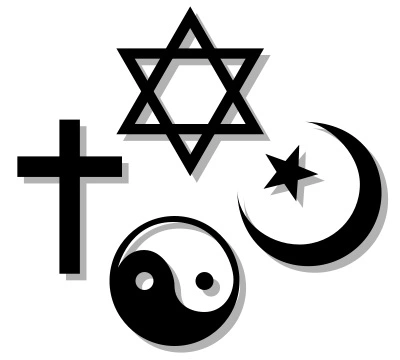Aztec religion
Publié le 22/02/2012

Extrait du document

The religion of the people who
ruled the valley of Mexico (the region around
present-day Mexico City) when the Spanish conquered
it in the 16th century. According to legend,
the Aztecs migrated to the valley of Mexico from
the north. Around 1325 C.E. they settled a marshy
island in the middle of Lake Texcoco. Their patron
god, Huitzilopochtli, had pointed the site out to
them. By reclaiming land from the lake, they built
a major city named Tenochtitlán (Mexico City,
today). Three causeways connected it to land. By
the time the Spanish arrived in the 1520s, Tenochtitlán
had perhaps half a million inhabitants. By
that time, too, the Aztecs had established their
dominance over the entire region.
The Aztecs had elaborate views of time and
space. Good examples of these are the famous
Aztec calendar stone and illustrations from ancient
pictographic books known as codices. The Aztec
views were very similar to those of the Maya (see
MAYA RELIGION). The Aztecs resembled the Maya,
too, in believing that they were living in the fi fth
world or, as they called it, the "fi fth sun." A famous
story, the "Legend of the Suns," relates the fate of
the previous four worlds and predicts the fate of
the fi fth.
The Aztecs worshipped several deities.
Huitzilopochtli, "the Hummingbird of the
Left," was one of two deities worshipped at
the great temple in the middle of Tenochtitlán.
Construction workers in Mexico City discovered
the temple by accident in 1978. The other deity
worshipped there was Tlaloc, the god of rain. A
third god, Quetzalcoatl, the feathered serpent,
had a temple nearby.
The Aztecs knew Quetzalcoatl in several forms.
One was a priest-king of the ancient city of Tula.
This Quetzalcoatl diligently performed rituals. For
example, he offered blood from the calves of his
legs and he bathed ceremonially. As a result, Tula
prospered. At the same time, Quetzalcoatl refused
to perform certain rituals, such as human sacrifi ce.
According to one text, he sacrifi ced only snakes,
birds, and butterfl ies. Because of indiscreet behavior,
Quetzalcoatl was forced to abdicate his throne.
He traveled to the east and burned himself. His
spirit arose to the sky to become the planet Venus.
Another legend said that he sailed off into the east.
At fi rst the ruler of the Aztecs mistook the Spanish
warrior, Hernán Cortés, for Quetzalcoatl returning.
Like virtually all ancient peoples, the Aztecs
practiced RITUALS in their homes. In these rituals
they used small fi gurines and incense burners.
They also had a religion associated with ceremonial
centers. It consisted of SACRIFICES, often human sacrifi
ces. For the Aztecs, the human body contained
the sacred forces that made order and life possible.
These forces were especially concentrated in the
heart and the head. As a result, sacrifi ces paid particular
attention to hearts and heads.
The Spanish conquerors considered Aztec religion
to be the work of devils—literally. They tried
to obliterate it. Nevertheless, elements of Aztec
religion survived. They combined with the religion
of the conquerors to produce a distinct tradition of
ROMAN CATHOLICISM.
Liens utiles
- Une religion peut elle être plus vraie qu'une autre ?
- Relationship between religion, spirituality, and young Lebanese university students’ well-being.
- : En quoi ce passage est-il une parodie des romans de chevalerie et une satire de la religion ?
- ANTHROPOLOGIE POLITIQUE ET SOCIALE. THEME : LE MOUVEMENT ALMORAVIDE ENTRE ECONOMIE ET RELIGION.
- Ethique appendice du livre I de Spinoza: déterminisme et religion







